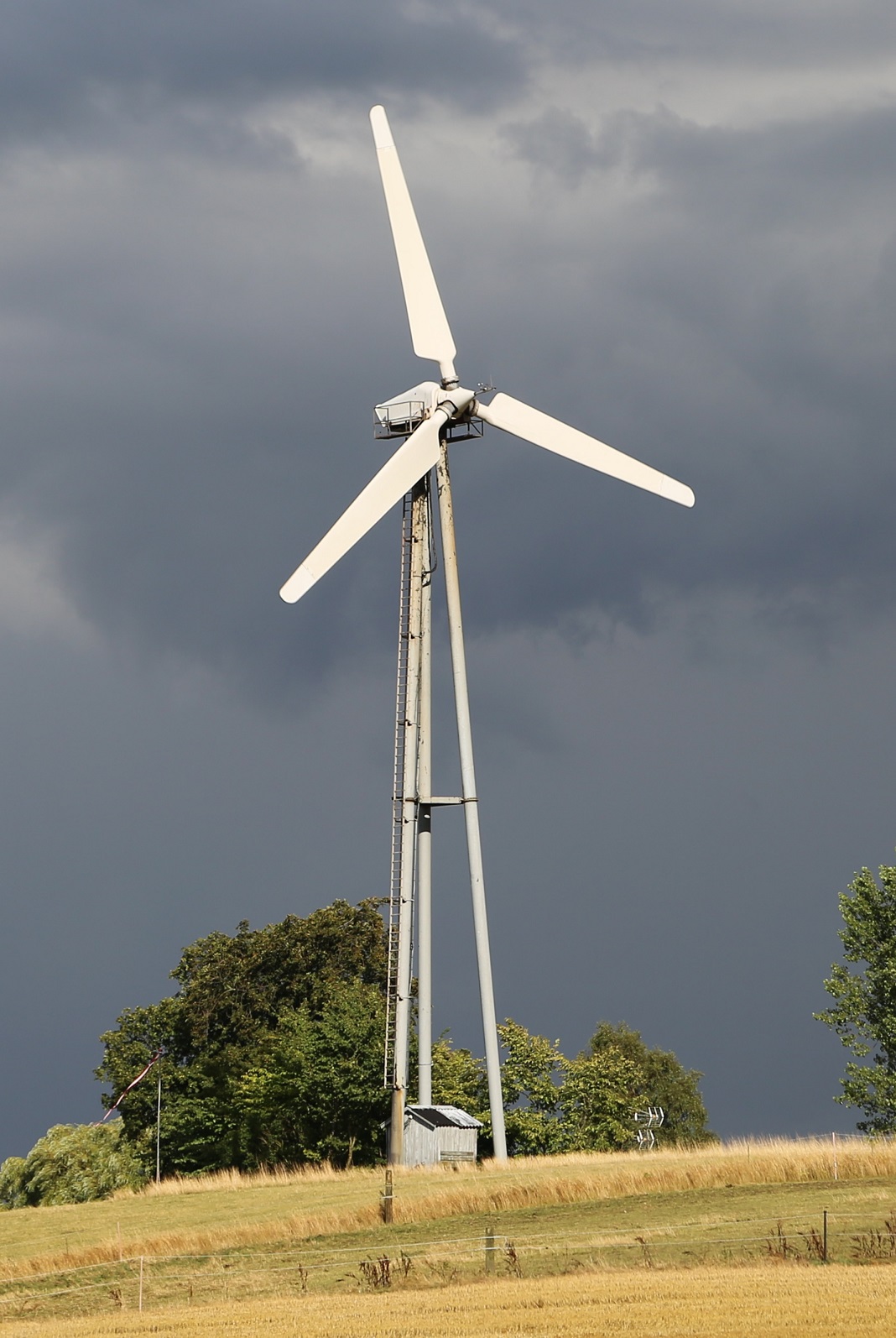

The formula for swept area is Pi r^2, where Pi is 3.1415 and r is the radius of your prop. That's how many square feet (or meters, if you are into that sort of thing) of area the windmill's blades cover during a rotation. There is really only one important measure of windmill size.the swept area.
#Single home wind turbine generator
Check our recommended reading list HERE.įirst, figure out how big a wind generator you are willing to tackle, either commercial or home-brewed. | Site | Tower | Anemometers | Generators & Alternators | Cut-In Speed | Alternator Design | | Rotor Design & Carving | Furling & Shutdown | Regulation | Slip Rings | Futher Reading | Where do you start? First, do your homework! Why re-invent the wheel when you can learn from others' successes and failures? There are many useful books, websites and plans available. Combined with an ESS, this setup can make a home self-reliant from the energy grid.On this page we attempt to give a brief introduction to the basic concepts of designing and building wind turbines. The costs can range between USD 3,500 and USD 35,000.Įxperts recommend mixing both forms of renewable energy to maximise investment and ensure near-continuous power production. The upfront costs for wind energy can be high, but they remain on par with home solar. How Does This Compare to Home Solar and Utility-scale Energy? The largest home wind turbine kit installations for complete energy independence, or a business, can run over USD 50,000 for the turbines and installation. Larger turbines capable of powering a large portion of the household’s energy demands will cost between USD 3,000 and USD 8,000. Small wind turbines, which are used only as a background power source with little overall output, can cost several hundred dollars. The price for a home wind turbine varies considerably based on each home’s needs and power generation. There are schemes and funding mechanisms that governments offer to incentivise homeowners.

They are also equipped with maximum power point tracking (MPPT). Furthermore, the most expensive aspect of installing a turbine remains the upfront purchasing cost, with little maintenance needed and a relatively long operational life.īest home wind turbines can provide a return on investment reasonably quickly. Additionally, the home itself impacts efficiency, namely insulation.Īll factors considered, domestic wind turbines can be one of the most cost-effective systems on the market and can lower energy bills considerably. Elevation, surrounding topography, climate patterns and property orientation are all key considerations. The effectiveness of a home wind turbine is wholly dependent on location. This mirrors a model low-carbon energy grid at a national or international level. However, a system with multiple turbines, preferably with an ESS with other renewables, such as solar, is a viable option. This means a continuous energy production of 5 to 15 kW.Ī single-home wind turbine will struggle to produce this. In the United States, an average household consumes between 8,000 to 9,400 kWh a year. However, one turbine is not likely to provide a home’s entire electricity needs. The turbine will need to be placed in an area with a strong average wind speed rating (max efficiency at 43 km/h) to generate electricity and power the home adequately and can be coupled with an energy storage system (ESS) to reduce its intermittency. Wind Speeds need for Generating Wind Power As a rule of thumb, the average single-family home requires a minimum of a 5 kW turbine to generate power and meet its energy needs – this means installing a home wind turbine with a 4m to 5.5m rotor diameter. How Big of a Turbine Do You Need to Power a House?Ī wide range of home wind turbines on the market cater to all types of topography, architecture and budgets. While solar panels are currently the de-facto renewable power source for homeowners, home wind turbines are also starting to break into the market. Installing Solar Panels vs Small Wind Turbine for HomeĪlready one of the fastest-growing renewable energy sectors, wind turbines are expected to maintain rapid growth. These small distributed systems are typically part of a microgrid, ideal for rural or hard-to-electrify areas. As a result of the global shift towards reducing carbon emissions, experts are calling for unique energy solutions like decentralised power grids that allow consumers to have their own home wind turbines or solar panels.


 0 kommentar(er)
0 kommentar(er)
